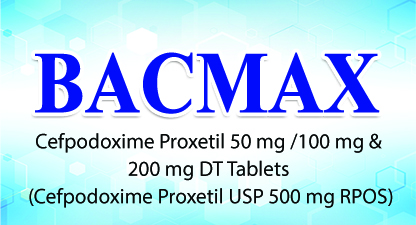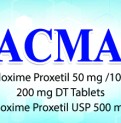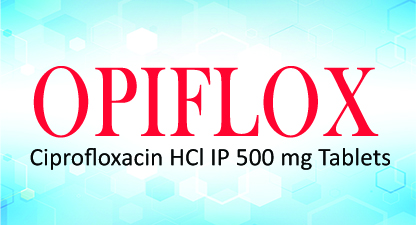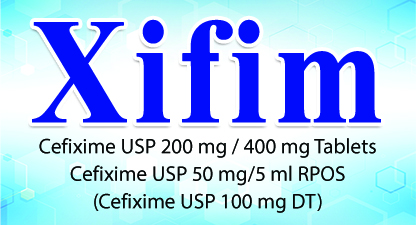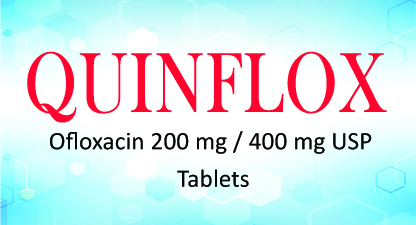BACMAX
A third-generation cephalosporin, Cefpodoxime Proxetil is a bactericidal agent that inhibits cell wall synthesis. It’s usually active against gram-positive aerobes, such as S. aureus (including penicillinase-producing strains), S. saprophyticus, S. pneumoniae, and S. pyogenes, and gram-negative aerobes, such as E. coli, H. influenzae (including beta-lactamase-producing strains), K. pneumoniae, M.catarrhalis, Neisseria gonorrhoeae (including penicillinase-producing strains), and P. mirabilis.
- Categories : Antibiotics
- Share Now :
BACMAX
Generic Name: Cefpodoxime Proxetil
Therapeutic Category: Antibiotics
Pharmacological Class: Second Generation Cephalosporin
Composition: Bacmax RPOS
Each 5 ml of reconstituted suspension contains Cefpodoxime Proxetil USP equivalent to Cefpodoxime Proxetil 50 mg
Presentation: Available in 60 ml bottle with a measuring cap
Mechanism of Action
Cefpodoxime is a bactericidal agent that acts by inhibition of bacterial cell wall synthesis. Cefpodoxime has activity in the presence of some beta-lactamases, both penicillinases and cephalosporinases, of Gram-negative and Gram-positive bacteria.
Indications
- Lower respiratory tract infections: Acute community acquired pneumonia, acute bacterial exacerbation of chronic bronchitis
- Upper respiratory tract infections: Acute otitis media, acute maxillary sinusitis, pharyngitis, tonsillitis.
- Uncomplicated urinary tract infections: Cystitis, Pyuria.
- Skin and soft tissue infections: Furuncle, cellulitis, subcutaneous abscess, infectious atheroma & periproctal abscess.
Dosage
Route of administration: Oral
BACMAX RPOS
Adults and Elderly:
Not applicable for this product
Infants (>2 months) and Children (up to 11 years):
The recommended mean dosage for children is 8mg/kg/day, administered in two divided doses at 12-hour intervals.
The following table provides dosage regimen for children as per the bodyweight graduations provided on the measuring cap:
Body weight in | Cefpodoxime dose in mg to be used twice daily | Cefpodoxime dose in ml to be used twice daily |
5 | 20 | 2.5 |
10 | 40 | 5 |
15 | 60 | 7.5 |
20 | 80 | 10 |
25 | 100 | 12.5 |
Direction for Reconstitution
- Shake the bottle until the powder flows freely.
- Boil the water and let it cool down at room temperature.
- Add approximately one half of the total water required for reconstitution. Shake vigorously to suspend powder.
- Add remaining water up to the mark and shake vigorously.
- This provides 60 ml of solution.
Note: Store the suspension at 2-80C
Do not use the suspension for more than 7 days
Pharmacokinetics
Absorption: Absorbed via the GI tract. Absorption and mean peak plasma levels increase when drug is given with food.
Distribution: Widely distributed to most tissues and fluids. Adequate data on CSF levels are not available.
Protein binding: 22 to 33% in serum and from 21 to 29% in plasma
Metabolism: De-esterified to its active metabolite, cefpodoxime
Route of elimination: Renal
Half-life: 2.09 to 2.84 hours
Adverse Effects
Common side-effects are:
- Nausea, vomiting, stomach pain, mild diarrhea, bloating, gas, constipation
- diaper rash; mild itching or skin rash
- stiff or tight muscles, back pain, muscle pain
- headache, tired feeling
- anxiety, nervousness, feeling restless or hyperactive
- dizziness, spinning sensation
- dry mouth, unusual or unpleasant taste in your mouth
- white patches or sores inside your mouth or on your lips
Contraindications
BACMAX is contraindicated in the following situations:
- Hypersensitivity to cefpodoxime or to any of the components of the formulation.
- Safety of Cefpodoxime is not established in infants under the age of 2 months.
Precautions
- Bacterial or fungal overgrowth of non-susceptible organisms may occur with prolonged or repeated therapy
- Use with caution in patients with history of penicillin allergy
- Use caution in patients with history of beta-lactam allergy, especially IGE mediated reactions, including angioedema, anaphylaxis, urticaria)
- Some dosage forms may contain the metabolite of benzyl alcohol benzoic acid; large amounts of benzyl alcohol associated with potentially fatal toxicity (gasping syndrome) in neonates; avoid or use dosage forms containing benzyl alcohol derivative with caution in neonates
Drug Interactions
- Antacids, H2 antagonists, oral anticholinergics may decrease efficacy of Cefpodoxime.
- It may be potentiated by probenecid.
- Also, administration of concomitant diuretics, other nephrotoxic drugs must be avoided.*Terminologies:
*Terminologies:
Cystitis: An inflammation of the bladder.
Prostatitis: The inflammation (swelling) of the prostate gland.
Plague: An infectious disease caused by the bacterium Yersinia pestis.
Tendinitis: The inflammation of a tendon, most commonly from overuse but also from infection or rheumatic disease.
Myasthenia Gravis: A chronic autoimmune neuromuscular disease that causes weakness in the skeletal muscles, which are responsible for breathing and moving parts of the body, including the arms and legs.

